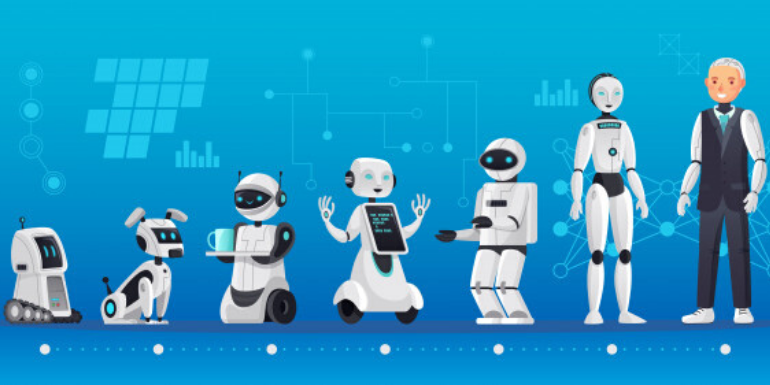Development of new
products and technology and introduction of innovation are done by research engineers,
and they help in developing existing systems, techniques, process and create
and introduce new innovations. They mainly require theory and analytical skills
and the tasks that they perform are highly diverse. These engineers are
performing a vast range of activities including collection of data and
evaluation, calculations of statistics wherever required, experiments, analysis
of systems and data, conduction of feasibility studies etc. Further they have
to publish their findings to the relevant audience. In such situations
motivation is a highly important factor for engineering employees to
continuously focus on their tasks.
According to Jain, et al.,
Engineers can achieve
both intrinsic and extrinsic motivation. Intrinsic motivation is identified as
the achievement of motivation through the internal desires whereas engineering
employees can achieve motivation through the success of their projects and new
innovations
When it comes to
engineering employees, motivation plays a huge role in terms of increasing
their productivity within their role of work. Mainly most of the research
engineers are motivated by performing challenging tasks or projects while
scientists are motivated through the freedom that they receive. However, all
these engineering employees will be motivated through the increased resources
which will be received by them to perform their tasks
As per Ashmos & Duchon,
References
Ashmos, D. P. & Duchon, D.,
2000. Spirituality at Work: A Conceptualization and Measure. Journal of
Management Inquiry, 1 6, 9(2), pp. 134-145.
Badawy, M. K., 1988. What we've learned: Managing Human Resources. Research Technology Management, 31(5),
pp. 19-35.
Henry, L. T., John, R. R. &
Neal, P. M., 2000. Managing Organizational Behavior. 4 ed.
s.l.:Wiley-Blackwell.
Jain, D., Gupta, D. & Bindal, D.,
2019. A Study of Employee Motivation in Organization. International
Journal of Engineering and Management Research, Volume 9, pp. 65-68.
Mitchell, T., 1997. Research in
Organizatonal Behaviour. Greenwitch: s.n.

Hi Dumindu, additmg to your post that different types of motivation are frequently classified as extrinsic or intrinsic. Extrinsic motivations arise from outside of the individual and frequently involve rewards such as trophies, money, social recognition, or praise. Intrinsic motivations are those that originate within an individual. According to Sansone and Harackiewicz, (2000), anyone who has ever set a goal understands that simply wanting to do something is not enough. Achieving such a goal necessitates the ability to persevere in the face of adversity and the endurance to keep going in the face of adversity.
ReplyDeleteHi Dumindu, I agree with your blog. The literature on software engineering motivation paints a contradictory and incomplete image of the field. Motivation is clearly context-dependent and differs from engineer to engineer. The job itself is the most frequently cited motivator, but we discovered very little research on what it is about that job that Software Engineers find motivating. Furthermore, evaluations frequently focus on how Software Engineers feel about "the company," rather than "the profession." Although there exist, models of motivation in Software Engineering, they do not account for the shifting roles and environments in which Software Engineers work. (Beecham, S., Baddoo, N., Hall, T., Robinson, H. and Sharp, H., 2008)
ReplyDeleteHi Dumindu. An intriguing post on motivation. To further add to your blog, according to a study on employee motivation in the software business, corporate culture has fostered employee honesty and improved employee feelings of belonging. Hence, strong organizational culture has led to the improvement of employee's motivation (Cheeran et al, 2015).
ReplyDeleteHi Duminda , I concur with you , Employee incentives are an important aspect of every company's motivating program.
ReplyDeleteIn general, we can divide rewarding into three groups (Kachaková, 2003):
Hi Dumindu, the points you have mentioned here are very valid and clear. Further to support the topic I would like to add a few more things to it. Due to low employee motivation, the organization has to face the problem of high employee turnover. As a result of high employee turnover, declining reputation, low productivity, reduced growth and loss the future sustainability are major impacts on the organization (Lee and Brookshire, 2017).
ReplyDeleteHi Dumindu, Very informative post. Further, Armstrong, (2014) stated that extrinsic motivators doesn't last long and intrinsic motivators which are concerned with quality of working life will last long.
ReplyDeleteAgreed Nuwan. According to Ryan and Deci (2000), intrinsic motivation is defined as doing an activity for its inherent satisfaction. Since most research engineer's hobby is associate with the occupation it will last long other than extrinsic motivators which is an external factors that affect motivation.
DeleteHi Dumidu,
ReplyDeleteAgree with you . According to Jain, et al., (2019), motivation is an important factor which influences individuals to execute their performance in a better way and to achieve organizational objectives through that.
I agree with above comments. Motivated and committed employees with high levels of job involvement are considered as an important asset to an organization (Denton, 1987). Keeping the employee motivation, commitment and job involvement up, is always rewarding to a business; as motivated and committed employees are more productive (Denton, 1987).
ReplyDelete